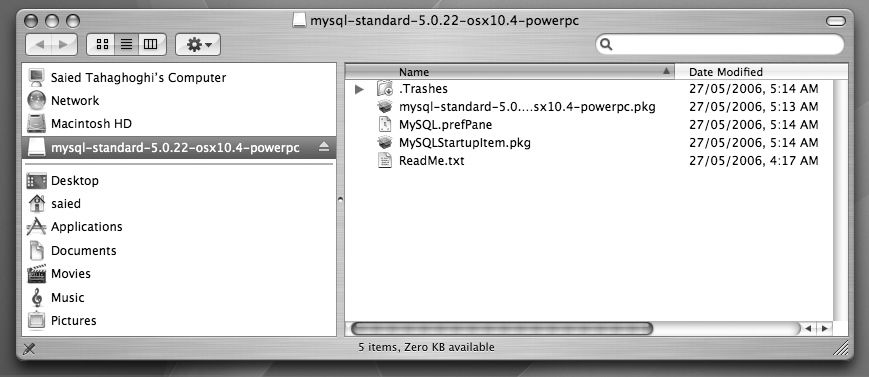Installing Under Mac OS X
In this section, we’ll look at three ways to install MySQL on a Mac OS X system:
System-wide, using an installation package provided by MySQL AB.
Local, using an non-installation gzipped tar package provided by MySQL AB.
System-wide, using the
XAMPPintegrated package.
To install system-wide, you should be able to access
superuser privileges through the sudo command.
Installing only MySQL Using the Installer from MySQL AB
Following the instructions of Downloading MySQL from the MySQL AB Web Site,” earlier in this chapter, visit the MySQL AB downloads page and choose the package corresponding to the version of your operating system and your system processor.
Pick the Standard installer (rather than TAR) package. This is a small package that has everything you need. Once the file is downloaded, double-click on it to unpack the archive and view the package contents. You should see something similar to Figure 2-17.

Figure 2-17. The contents of the MySQL AB Mac OS X installer package
Double-click on the package file with a name beginning with mysql-standard- to start the installation process.
Simply following the prompts will install to the /usr/local/mysql-<version>
directory, where <version> is the MySQL
version number. It also creates the symbolic link (or alias)
/usr/local/mysql that points to this installation directory. For example, the files could be installed ...
Get Learning MySQL now with the O’Reilly learning platform.
O’Reilly members experience books, live events, courses curated by job role, and more from O’Reilly and nearly 200 top publishers.

